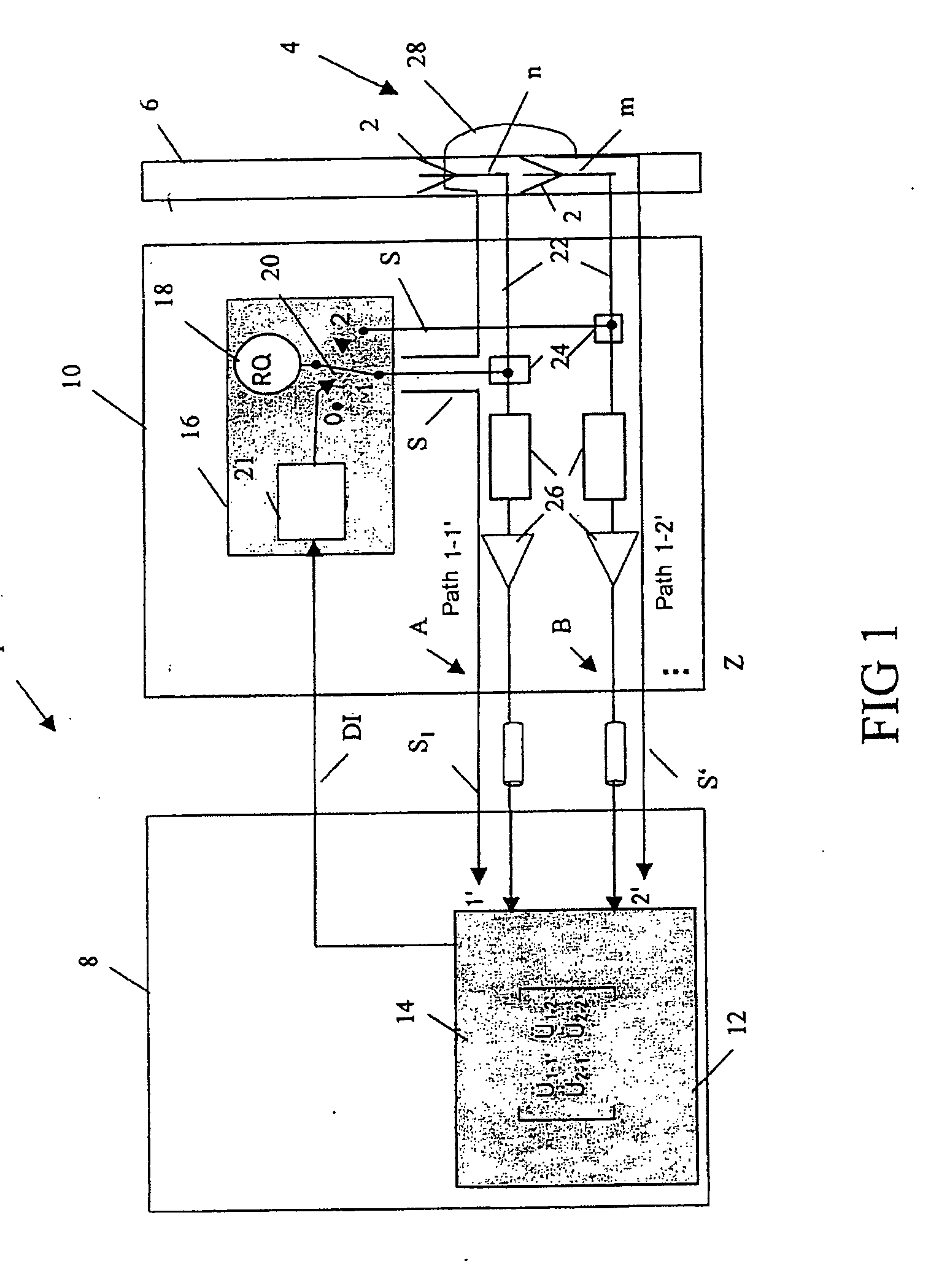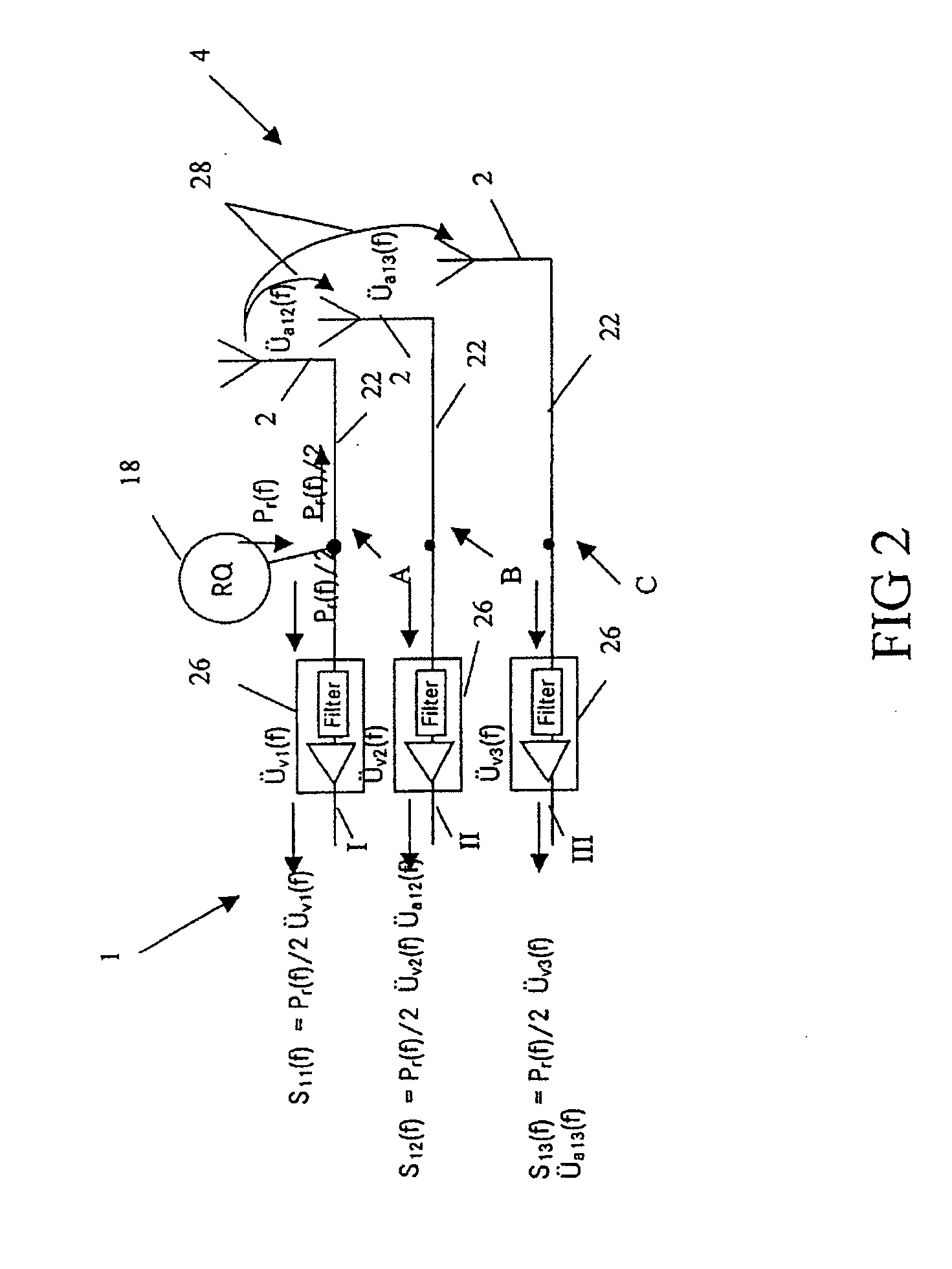Method and system for sampling at least one antenna
a technology for antennas and antennas, applied in the field of methods and systems for sampling at least one antenna, can solve the problems of high production cost, unsuitable diagnosis system, and difficult to detect the functional test of the antenna in the installed state, and achieve the effects of low cost, low cost and simple arrangemen
- Summary
- Abstract
- Description
- Claims
- Application Information
AI Technical Summary
Benefits of technology
Problems solved by technology
Method used
Image
Examples
Embodiment Construction
[0015]FIG. 1 shows a circuit arrangement 1 for testing an antenna system 4, which comprises two or more antennas 2, on a vehicle. The antenna system 4 is integrated in a glass pane 6, for example the rear windshield, a side window, or the rear window and / or side window or windows of the vehicle. The circuit arrangement 1 has a receiver module 8 and a coupling module 10, which is arranged between the antennas 2 and the receiver module 8. The antenna or coupling module 10 is used for injection of a noise signal S into the respective antenna 2 and into the receiver module 8, which is also referred to as a tuner. The receiver module 8 also has a test module 12 for determination of an instantaneous transmission coefficient (Üvi) on the basis of the ratio between the noise signal component S′ that is injected via the antennas, and the noise signal component S1 which is transmitted directly from the noise source to the receiver. In order to determine the serviceability of the respective an...
PUM
 Login to View More
Login to View More Abstract
Description
Claims
Application Information
 Login to View More
Login to View More - R&D
- Intellectual Property
- Life Sciences
- Materials
- Tech Scout
- Unparalleled Data Quality
- Higher Quality Content
- 60% Fewer Hallucinations
Browse by: Latest US Patents, China's latest patents, Technical Efficacy Thesaurus, Application Domain, Technology Topic, Popular Technical Reports.
© 2025 PatSnap. All rights reserved.Legal|Privacy policy|Modern Slavery Act Transparency Statement|Sitemap|About US| Contact US: help@patsnap.com



